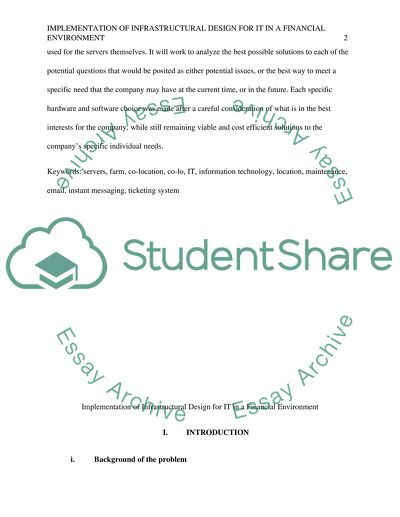Cite this document
(“Implementation of Infrastructural design for information technology in Research Paper”, n.d.)
Retrieved from https://studentshare.org/information-technology/1470029-implementation-of-infrastructural-design-for
Retrieved from https://studentshare.org/information-technology/1470029-implementation-of-infrastructural-design-for
(Implementation of Infrastructural Design for Information Technology in Research Paper)
https://studentshare.org/information-technology/1470029-implementation-of-infrastructural-design-for.
https://studentshare.org/information-technology/1470029-implementation-of-infrastructural-design-for.
“Implementation of Infrastructural Design for Information Technology in Research Paper”, n.d. https://studentshare.org/information-technology/1470029-implementation-of-infrastructural-design-for.


